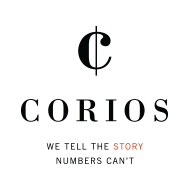In the analytics media right now, “customer journeys” are cool and topical, but predictive customer journeys are even more inspiring, because they go well beyond telling you what’s already happened, into the zone of what’s likely for each of your customers to do next, and what you can do about it to present a timely strategy or treatment. This helps you improve offer timing, relevance and profitability.
You might have read some of our case studies in this area such as Five Lessons Learned From Predictive Customer Analytics or What Does a Predictive Customer Journey Look Like.
What you probably don’t know is, while customer journeys just became cool in 2017, we were building predictive customer journey strategies back in 2005 with a customer loyalty decision sciences program for one of the country’s prominent payment platforms.
 Here’s how the program worked. The payments platform marketers selected a nationwide merchant for a sales stimulation offer, like $25 cash back at the point of purchase on a purchase of $100 or more. The strategy was that these could only be cardholders that hadn’t purchased anything using that card at that merchant’s stores anywhere in the country in the last six months. This dramatically increased the direct attribution of these offers towards cardholder response.
Here’s how the program worked. The payments platform marketers selected a nationwide merchant for a sales stimulation offer, like $25 cash back at the point of purchase on a purchase of $100 or more. The strategy was that these could only be cardholders that hadn’t purchased anything using that card at that merchant’s stores anywhere in the country in the last six months. This dramatically increased the direct attribution of these offers towards cardholder response.
In terms of targeting, it would have been easy to simply contact those customers who had purchased at the merchant’s direct competitors, or had high RFM (recency, frequency, monetary) behavior in that merchant’s broader category (e.g., retail apparel, or airline travel, or small office/home office, or retail technology). Of course, we did use that sort of information as an input in our scoring and segmentation approach.
Looking back, we did something else that turned out to be even more powerful. We had access to 13 months of individual transactions for over 60 million cardholders. We built behavioral profiles of customers that ought to have purchased with that merchant (but didn’t), based on their purchasing similarity to other customers that actually had purchased from that targeted merchant. This meant looking at purchasing patterns across virtually every merchant category, the timing of those purchases, and the sequencing of relevant purchasing events by week and by month.
Using those advanced approaches, and comparing to several comparison approaches (i.e., using only purchasing history with the merchant’s direct competitors, or using random selection with the same cash-back incentive), we found our approach usually beat every other approach by a wide margin. Performance analytics revealed that most importantly, we could get the offer timing right based on who was primed for such a purchase.
We repeated this set of market tests for over 18 months, building more than a dozen of these major campaigns, improving the approaches, and generating tens of millions of dollars in increased spend incremental to the other test cells in our campaigns. We also leveraged this approach with some other credit card issuer clients of ours, seeing whether these approaches would work as well for customer retention tests as it did for sales stimulation (it did).
This is one of the client experiences that led us to create the Corios tagline, “We tell the story numbers can’t”, because we found we were literally telling a story about consumer purchasing patterns that perhaps nobody else had discovered yet. We were lucky to have access to such a massive repository of transaction data was so difficult to put in one place, given the technology capabilities of the time.
Since then, we’ve generalized the approach to go well beyond credit cards, and applied it in all sorts of other financial services, manufacturing and retail domains, for marketing, risk and financial crimes behaviors, and focusing on telling stories about the customer journey across the omni-channel experience.
Do you want to know more about predictive customer journeys? Send us a note to [email protected] to start your own journey.

 Here’s how the program worked. The payments platform marketers selected a nationwide merchant for a sales stimulation offer, like $25 cash back at the point of purchase on a purchase of $100 or more. The strategy was that these could only be cardholders that hadn’t purchased anything using that card at that merchant’s stores anywhere in the country in the last six months. This dramatically increased the direct attribution of these offers towards cardholder response.
Here’s how the program worked. The payments platform marketers selected a nationwide merchant for a sales stimulation offer, like $25 cash back at the point of purchase on a purchase of $100 or more. The strategy was that these could only be cardholders that hadn’t purchased anything using that card at that merchant’s stores anywhere in the country in the last six months. This dramatically increased the direct attribution of these offers towards cardholder response.
